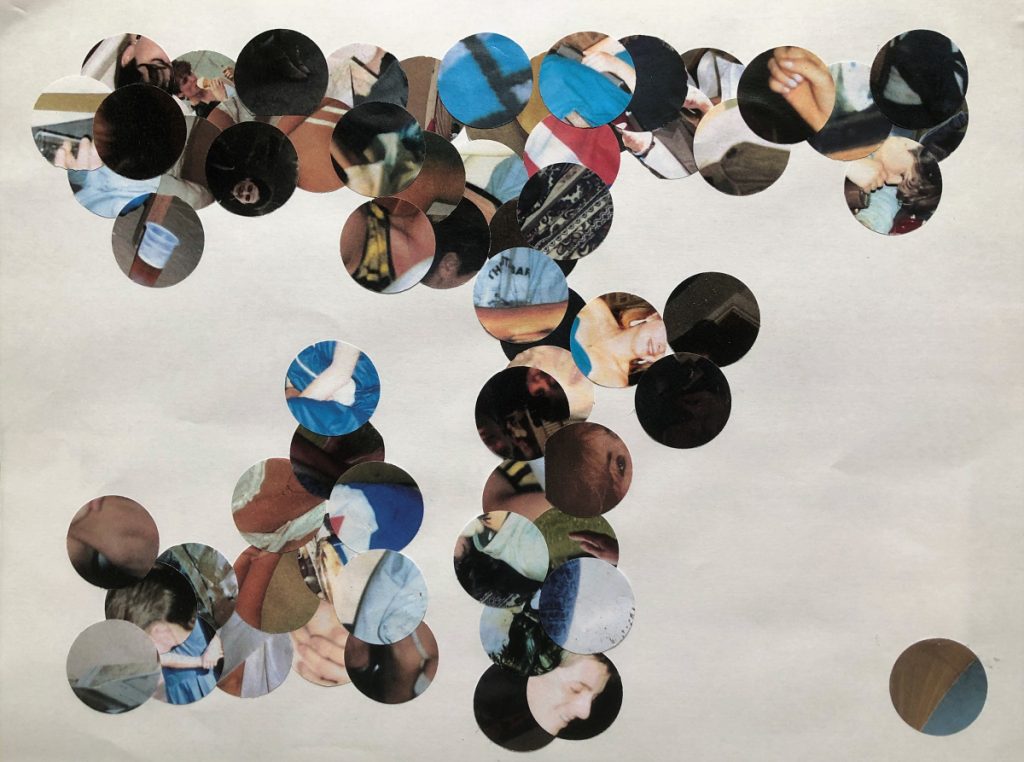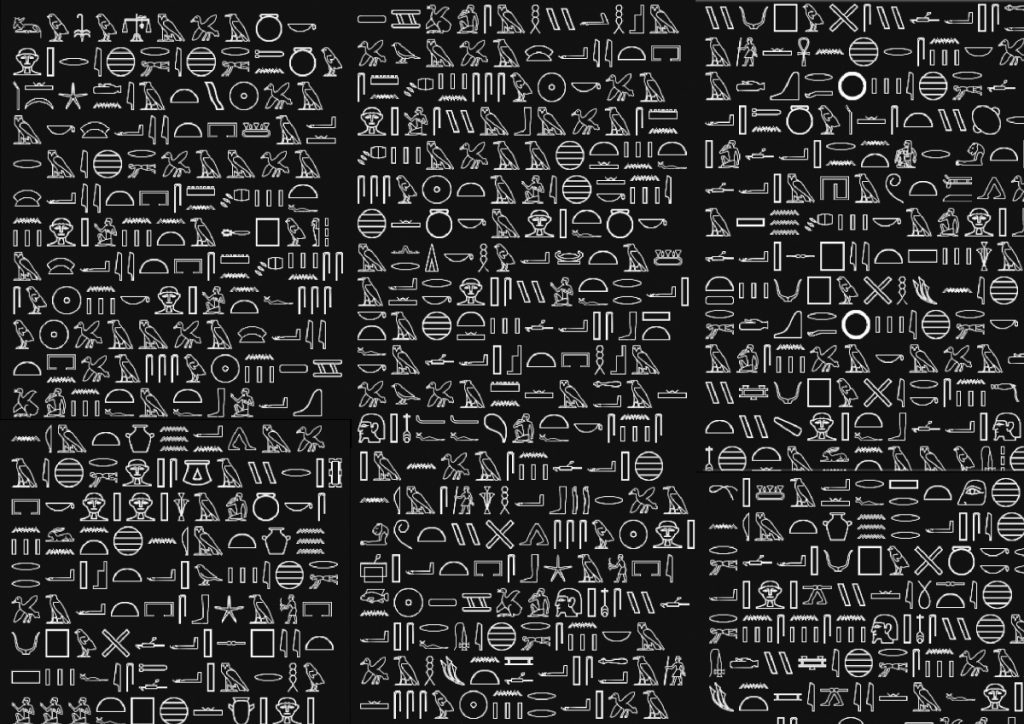The previous experiment created an amorphous graph based on the sentiment analysis of a set of letters. It was an interesting reinterpretation of the source material that did reveal some insights but needed to be pushed further. I now considered how that result could be evolved to add a layer of human meaning or abstracted into a different type of visualisation.
Below I took circle cut outs from a set of photographs taken at the same time as the letters were written and used them to recreate the graph manually. As a manual exercise it was quite a powerful experience. At times it felt like a game of drafts or backgammon in how pieces were being overlaid and erased. I found myself making decisions about which faces to show and which parts to hide. I enjoy how analogue data has been digitally analysed but then turned back into an analogue form. The end result being analogue seems more authentic and I can’t let go of the importance of the hand of the artist being visible, though I’m not committed to this yet.
The placing of the photographs is not completely accurate (based on the digital version), but does this matter? In some ways the human hand is adding its own interpretation – if we’d created a faithful reproduction then the point would have been lost. More significantly is the placing of individual images, which was completely random. Is there an order to what shows and what doesn’t? How would I make that decision? There may be scope in constructing some form of order if I were to take this idea further, so give the viewer some hints as to patterns, repeats, alignments, groupings. I wonder that if such a process was used, we could give the viewer a clue as to the nature of the original data?
A final observation is that we have made digital information look natural and organic through this reinterpretation. There is no clue that this is based on a digital source – we have removed the machine and added the human touch. I think the human hand adds significant emotive value.

It seemed worthwhile to try totally abstracting the original texts in a visual way, which I have done below. I came across a recently released hieroglyphics translator which takes a text input and creates the ancient Egyptian equivalent. A set of the text was converted below and recreated as what appear to be wallpaper strips. Visually this is quite appealing and I like how absolutely no meaning can be read into these symbols. One option would be to provide a key to allow viewers to ‘read’ the symbols but boredom would be a risk.
I can imagine the walls of a room being coated in this wallpaper and the power of the deafening silence that would result. So much would be said but nothing would be heard. The creation of an enclosed space surrounded on all sides by these encoded letters would be a claustrophobic experience – the concept of no escape and of no understanding would be quite meaningful.
There is also the historical context – could we chisel these words into stone or burn them into wood and are there elements of Egyptian history that are relevant? Grave goods of a past life would be sinister but certainly potent.
But the question arises, have we abstracted these messages too far? Yes, these are meaningful in a personal way but a viewer would have no inkling of their original source. But the addition of a strong title or other objects into the piece may add the context that is required so we shouldn’t dismiss a total abstraction of the original material as other media could be added, for example, sound.

This experiment has shown the potential of the chosen source data being converted from analogue to digital and back to analogue. The interjection of the human hand has proved significant.
Next steps
An immediate idea for a follow on experiment is the idea of creating a new language to represent the original letters. This could be a visual language of representations of letters or words. For example, key words could be identified and visuals or sounds created for them. A program could be written to interrogate the original words and display the new language – photographs, colours, sounds, etc. I like the idea of assigning music chords to different classes of words, major chords to positive sentiments and minor chords for more negative ones.
A note of caution is that taking this idea forward is attractive but it would demand a significant time to develop the code so it will be considered carefully first.